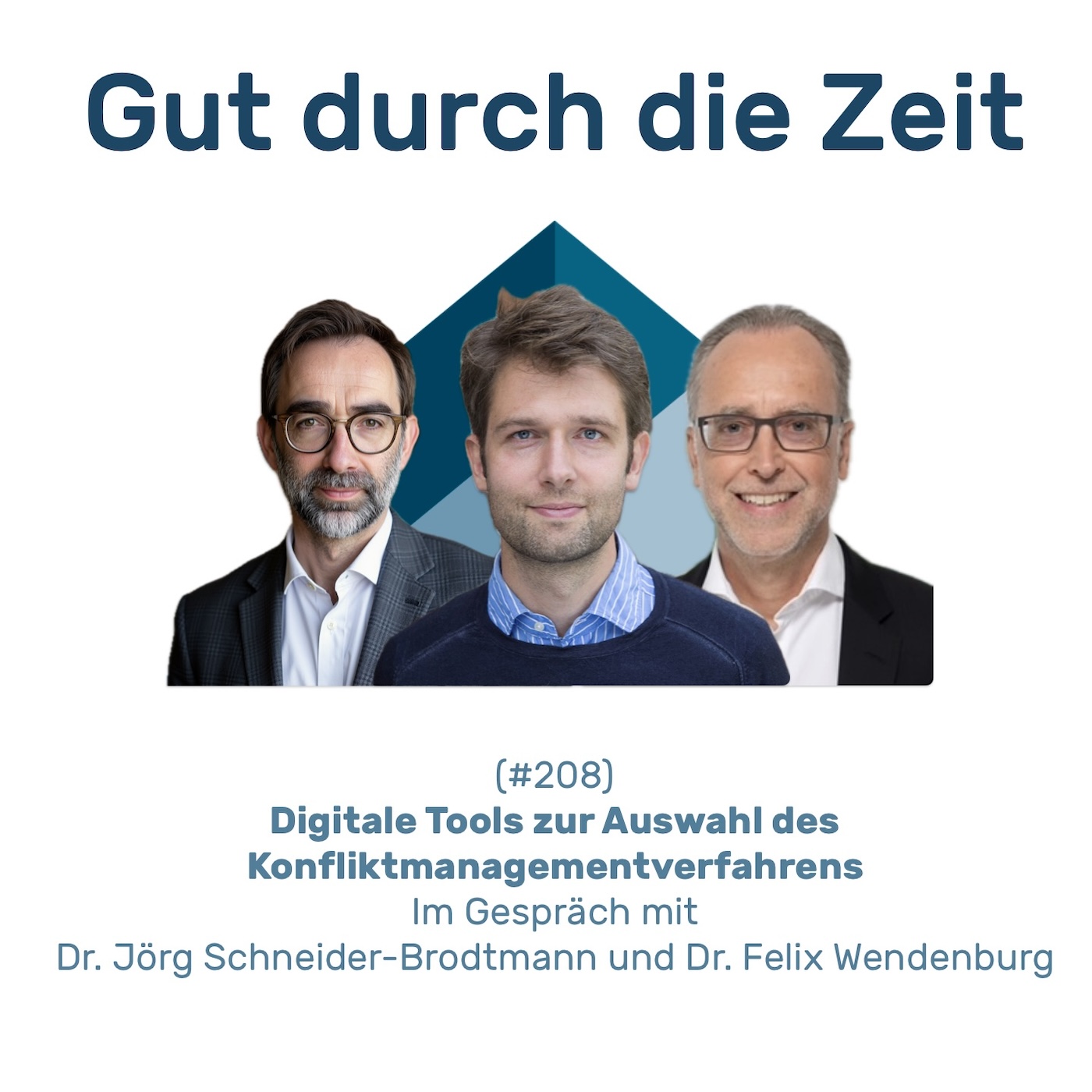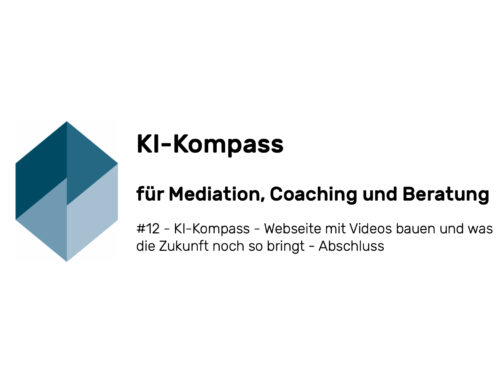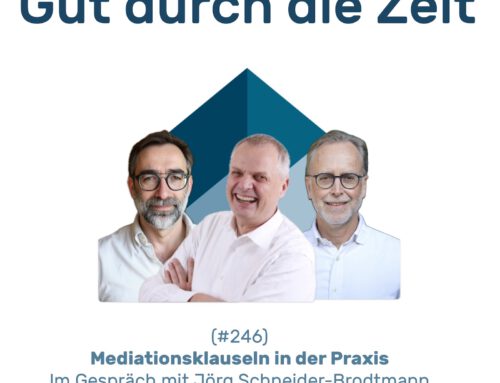INKOVEMA Podcast „Well through time“
#208 GddZ
Digital tools for selecting the conflict management procedure
Conflict prevention in practice: DiReCt & KOMPASS
In conversation with Dr Jörg Schneider-Brodtmann and Dr Felix Wendenburg
Felix Wendenburg, Doctor of Law and Mediator BM®; studied law at Bucerius Law School and Boston College Law School. From 2011 to 2020, he was Academic Director of the Master's degree programme in Mediation and Conflict Management at the European University Viadrina and, as part of his work for the Institute for Conflict Management, accompanied the Round Table Mediation and Conflict Management of the German Economy as a researcher from 2008 to 2020.
Well through time.
The podcast about mediation, conflict coaching and organisational consulting.
Contents
Chapter
This episode of „Well through time“ deals with the crucial topic of the Preventive measures in conflict managementI, Sascha Weigel, together with my colleague Jörg Schneider-Brodtmann, will be discussing innovative digital tools for selecting procedures. These tools, which we will discuss with Dr Felix Wendenburg, offer support in the selection of suitable conflict management procedures and can therefore help to tackle conflicts in a structured and efficient manner.
We start with a general introduction to the topic and highlight the relevance of preventative measures. In doing so, we explain that there are a variety of procedures that can help in conflict situations, but that they are usually only used when a dispute has already arisen. What we want to address in this episode is the Proactive approach to conflictsto prevent escalation. This concept is supported by so-called Interlocking clauses which can be contractually agreed in advance in order to facilitate an appropriate choice of procedure.
An important part of the discussion revolves around the digital tools that DiReCt and COMPASS.
Felix Wendenburg explains their development and functionality.
- DiReCt is specially designed for the B2B area and works like a choice-o-mat for conflicts, showing the different procedural options and their advantages and disadvantages.
- COMPASS on the other hand, is aimed at internal conflicts and takes into account the specific circumstances and constellations of the parties to the conflict.
By answering a series of conflict-related questions, the tools enable legal and HR departments to find out which procedure (court proceedings, arbitration, mediation, conciliation, etc. or group coaching, team development, mediation, clarification support, etc.) best fulfils the procedural interests of the parties involved.
We discuss the importance of clearly defining the procedures and taking into account the interests of the parties involved in order to find the best possible solution. We also talk about the challenges organisations face when it comes to systematically implementing conflict management systems. There is often limited knowledge of the approaches and alternatives available and a lack of a culture of open communication about conflicts. This is where the tools come into play, as they have an educational function and raise awareness of the wide range of procedures available.
In the course of the episode, we reflect on practical experience and the development of the counselling landscape in conflict management. Felix reports on the feedback that has been received on the tools so far and draws a comparison between the legal perspective and practical implementation. It becomes clear that it is not just about the choice of procedure itself, but also about the acceptance and trust that those involved need to develop in the processes.
Finally, the possibility of how these digital tools can be integrated into everyday business life and the role AI could play in the future of conflict resolution will be discussed. In this context, it becomes clear that there is a need to continue the discussion on preventive conflict management and to promote the diversity of conflict resolution methods.
With the topics addressed, the DiReCt and COMPASS tools offer a valuable resource for mediators and organisations to manage conflicts more effectively in future and thus promote more harmonious communication in companies.
The tools have been very well received by the professional community and are available for free use on www.rtmkm.de available.
Links to the digital tools
- DiReCtDispute Resolution Comparison Tool (LINK to DiReCt)
- COMPASSConflict management process selection assistant (LINK to KOMPASS)
Chapter
0:08 – Introduction to conflict resolution
10:26 – Process selection and its challenges
18:37 – The Direct and Compass tools
27:56 – The educational function of the tools
36:54 – Application of the tools in the company
45:40 – Mediation as the preferred procedure
54:18 – Conclusion and outlook for the future
Contents
Complete transcription




Leave A Comment